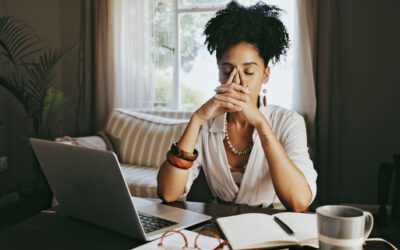As we approach the third anniversary of the COVID-19 pandemic and are hopefully transitioning to an endemic phase, we’re pausing to honor the 6.6 million lives lost, reflect on the profound experience this disease has had on us as survivors, and look for meaningful paths forward. In this article, part one of a two-part series on moving from a state of survival to conditions for thriving, we look at how American lives have collectively changed over the course of an ongoing public health crisis.
COVID-19: Surviving Survival Mode
In the beginning of the COVID pandemic, Americans went into survival mode. Many sheltered in place if they could; many experienced personal tragedies, from the deaths and prolonged illnesses of friends and family. We changed our behavior with social distancing; some of us shifted to unemployment or remote work; we developed coping strategies for the extreme stress, anxiety, and depression we were experiencing.
The trauma of COVID-19 caused such stress that our brains functioned in a different manner. Our prefrontal cortex, where executive functioning skills come from, turned the reins over to our survival brain. For adults, being in survival mode might look like:
- A lack of focus.
- Changes in memory. Your days may blend together, or you might not remember what happened earlier.
- Low energy and fatigue. This includes your body and your mind.
- Insomnia.
- Emotionally reactive and/or withdrawn.
- Forgetting basic needs.
- More impulsive. Many Americans ate and drank more, for example.
For those who were able to develop healthy responses to the ongoing stress, they started to exercise and physically move, such as getting out of the house for a daily walk; to reach out and connect with others, perhaps through Zoom; and to practice self-care, including getting quality sleep, developing a new pandemic routine, making time for a new hobby like baking bread, or seeking out moments of joy and laughter. In other words, they developed a resilience toolkit. These Americans were able to slowly exit survival mode, or at least manage the chronic stress well. For many, though, stress management was not quite that simple—and chronic stress was not necessarily a new experience.
COVID-19: Stuck in Survival Mode
When you’re stuck in survival mode and experiencing chronic stress—because, say, you’re a frontline worker in constant danger of contracting COVID-19 who can’t work remotely or afford to look for another job or take time off—it affects your productivity, relationships, and health. You’re more likely to have serious diseases, such as heart disease, obesity, and Type II diabetes; have an addiction, such as with alcohol, nicotine, and/or prescription drugs, as well as the internet, food, or gambling; and have mood and anxiety disorders. Whether it’s from the pandemic or it’s more related to poverty, discrimination, or a combination, overexposure to cortisol—the “stress hormone”—disrupts almost all of the human body’s processes.
COVID upended everyone’s lives. But it most significantly impacted BIPOC communities. Blacks, Latinos, and other people of color have suffered higher rates of COVID-19 infection and morbidity. They are more likely to be essential workers, and they were more likely to be unemployed as a result of the pandemic—especially Black and Latinx women.
Furthermore, and important to our work in mental health, Black, Indigenous, and people of color are less likely to have access to and seek out mental health services, and they are less likely to receive needed care. When they do receive mental health services, they are more likely to receive low-quality care and end care prematurely. The vast majority of mental health treatment providers in the United States are white, and some research shows that provider bias and stereotyping are factors affecting health disparities. It is imperative that in our field especially we increase cultural competency trainings, diversify workforces, and reduce stigma of mental illness.
All told, COVID-19 helped expose huge disparities in health, wealth, and healthcare access for Americans of color as compared to white Americans. With such a wide discrepancy between how some Americans were affected by COVID-19 compared to others, Americans were confronted with the stark differences in their lives due to privilege. This led to public outrage and was partly why—in addition to police brutality, growing economic and political divides, and building momentum toward racial consciousness, among other factors—Black Lives Matter protests drew record-breaking crowds. An estimated 26 million people took to the streets in the United States in the summer of 2020 to draw attention to and decry systemic injustice.
COVID-19: Moving toward Reflection
With a more-widespread understanding and management of chronic stress, proclamations in support of racial justice, and a gradual acclimation to life during the COVID-19 pandemic, more people began to move from survival mode toward a mode of reflection. We considered essential questions about our lives aroused by the pandemic. Presented with so many deaths in a short time span, we asked ourselves: How do we live a life of meaning? We’ll look at this question in depth in part two of “Coming Out of the Pandemic: From Surviving to Thriving.”




